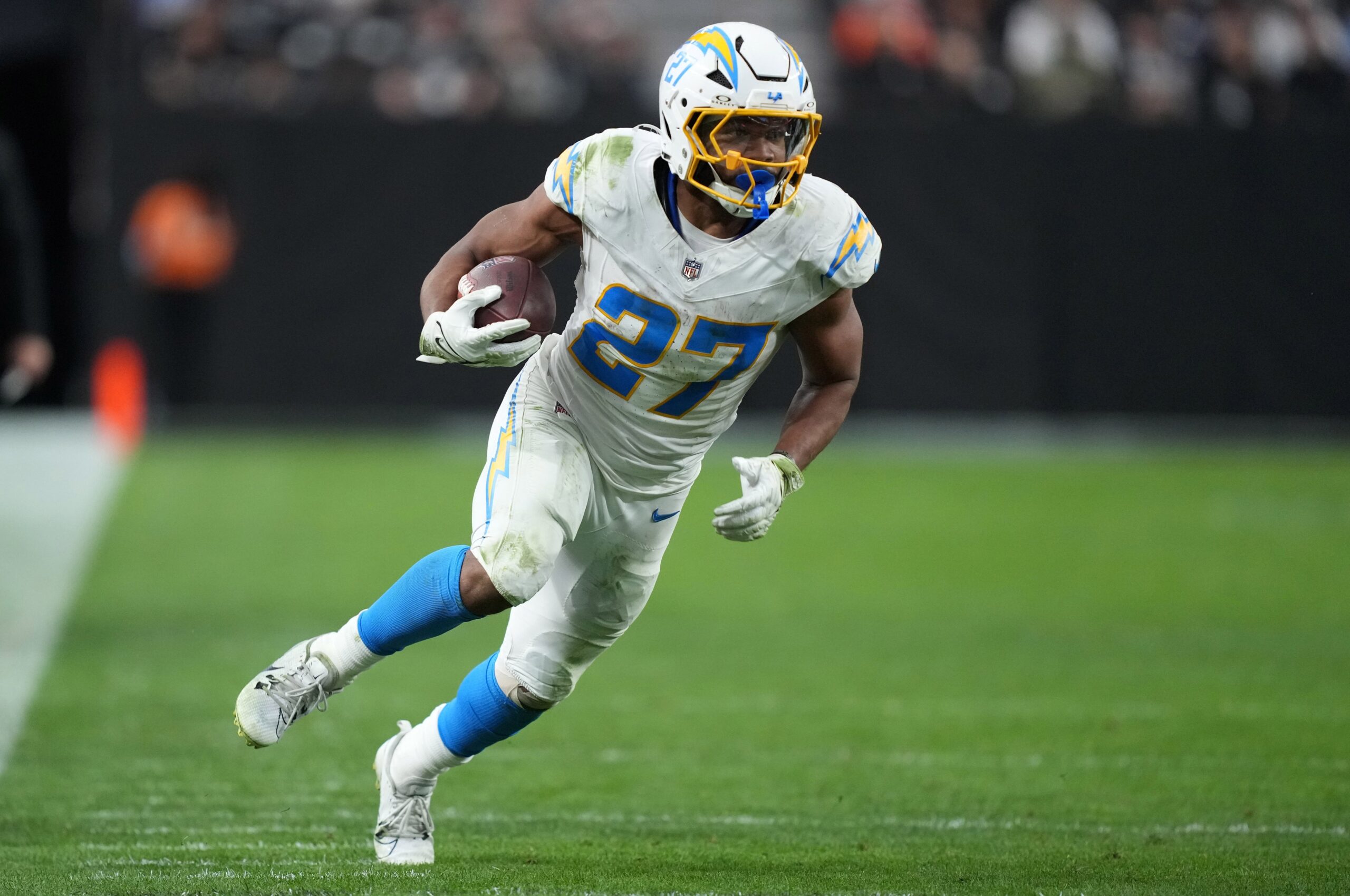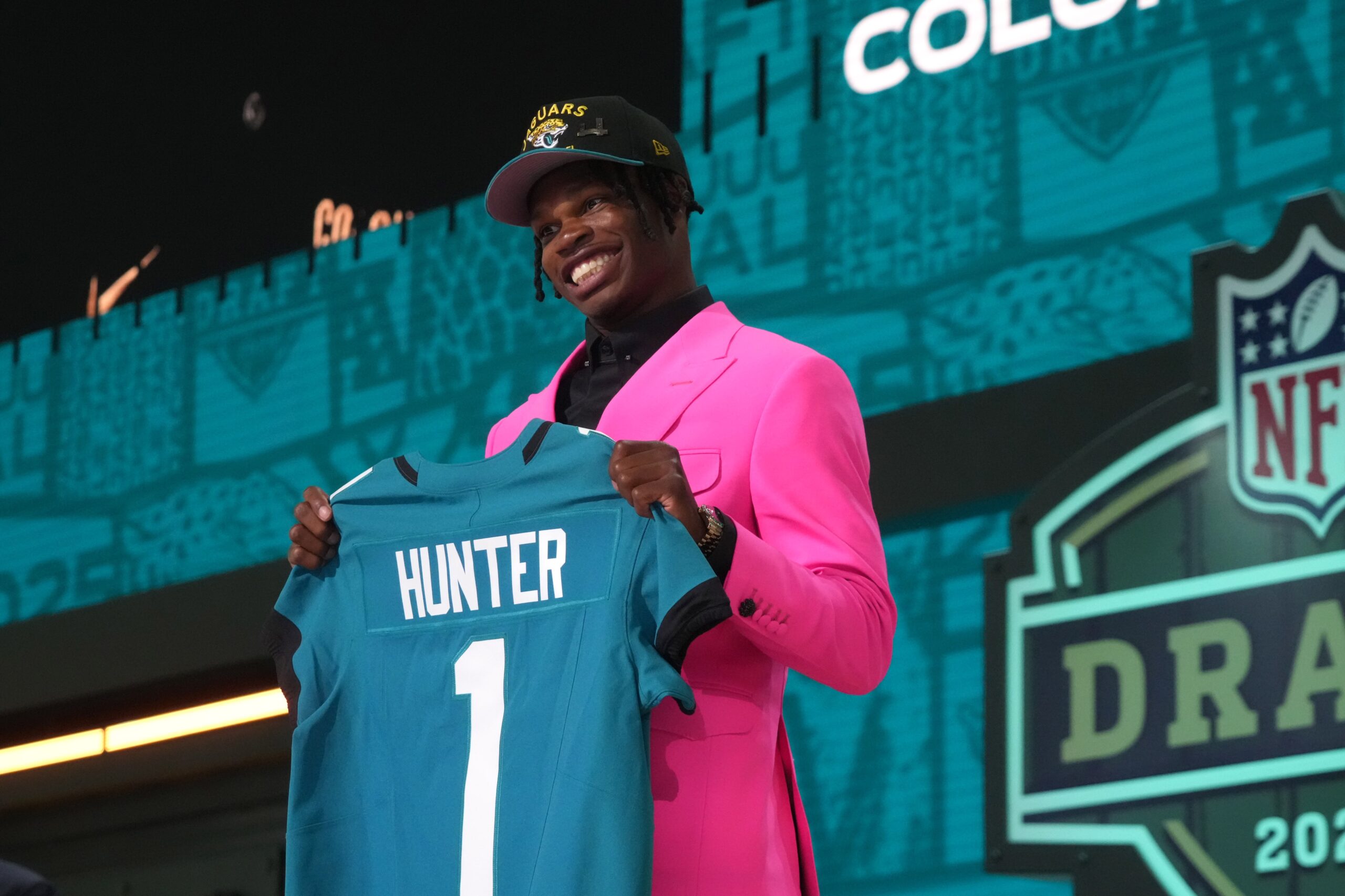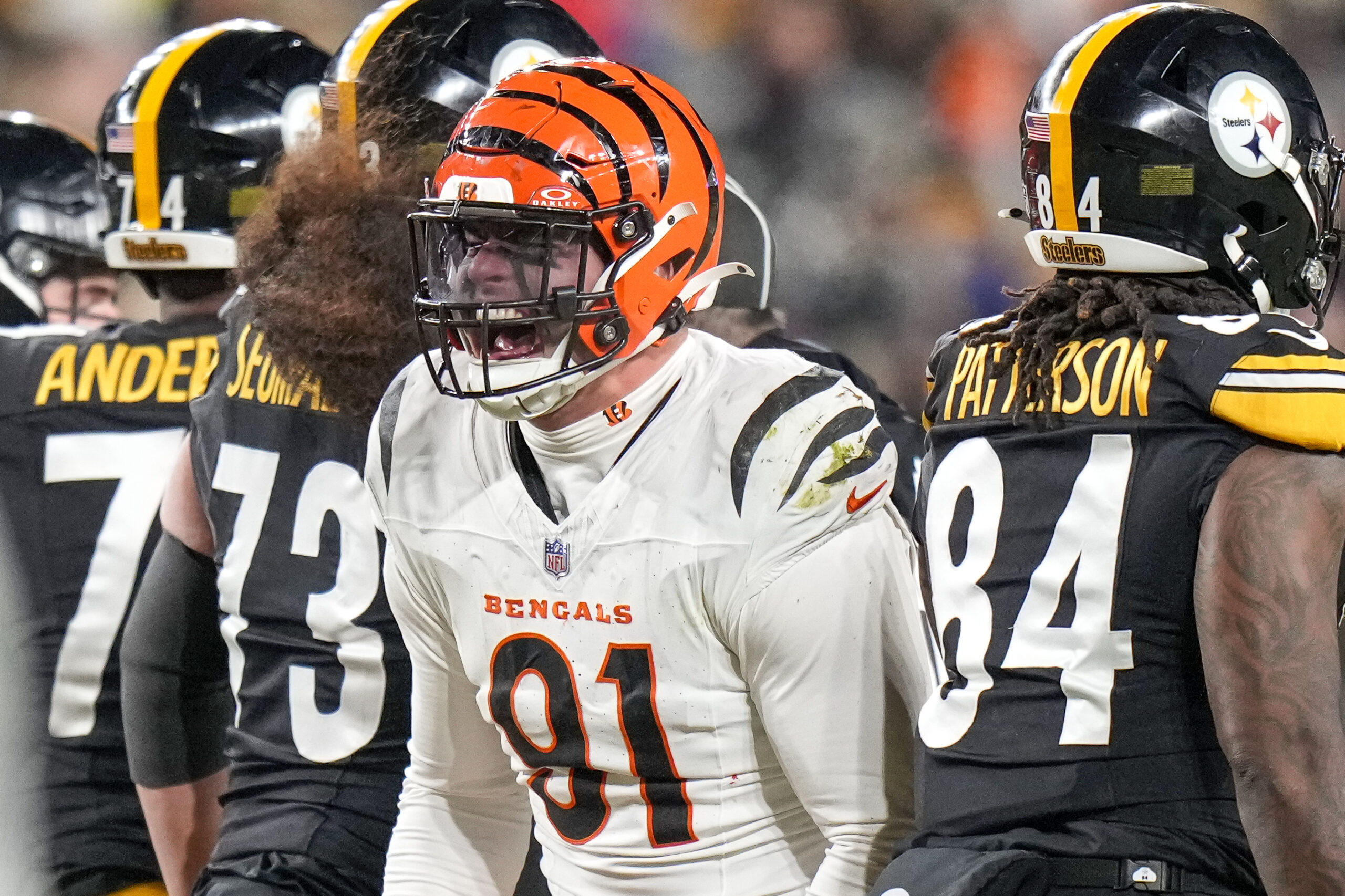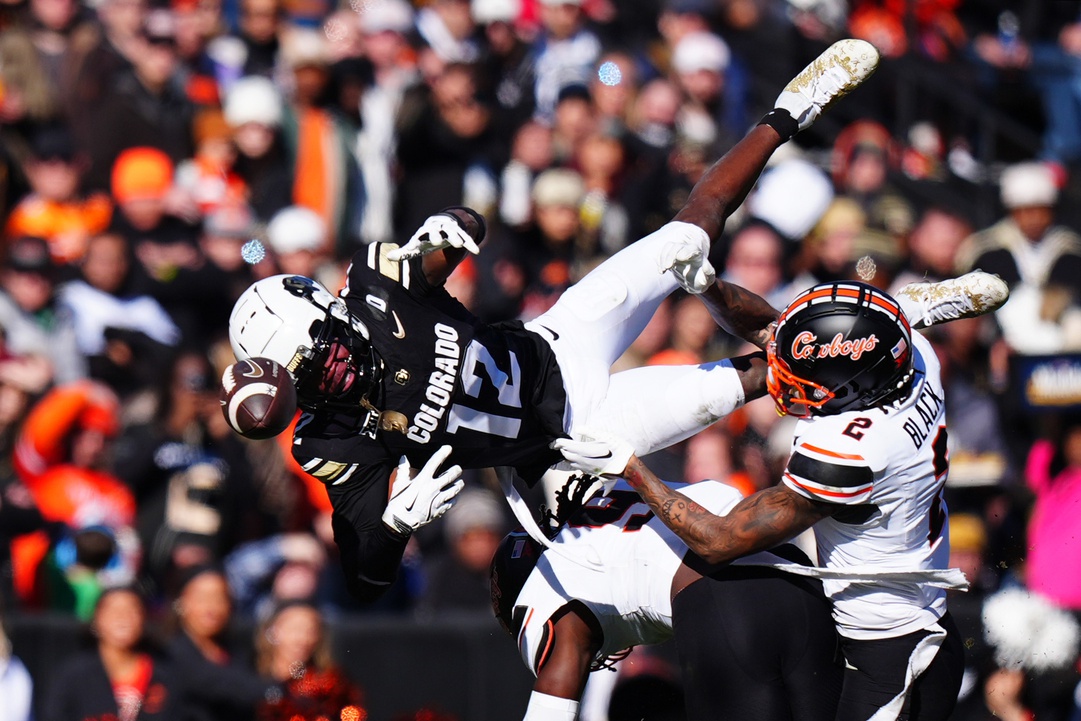NFL Analysis
4/19/24
9 min read
Dallas Cowboys' Future Hinges On Roster Decisions Yet To Be Made
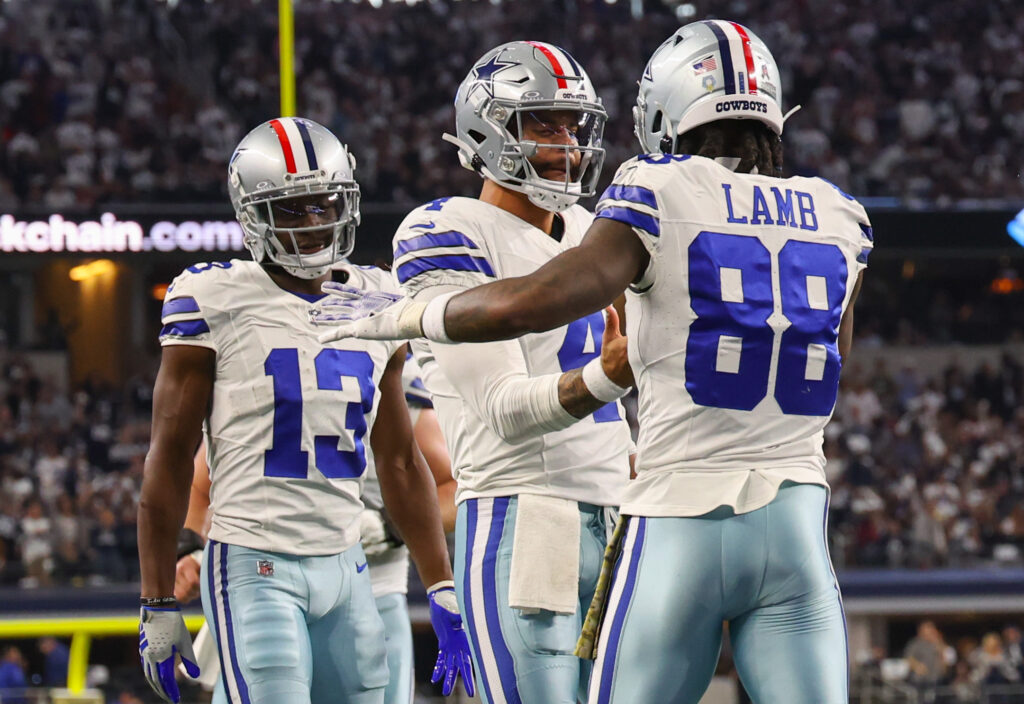
"We will be all in," Jerry Jones said at the end of January about the Dallas Cowboys' offseason.
Since then, Jones has tried to clarify what he meant. His definition of "all in" might differ from everyone else's, but the main sentiment was that the Cowboys would focus on 2024 and not on the future.
The Cowboys aren't focused on the future because their approach to the 2024 offseason makes the coming season the most significant pivot point for any team in the league.
Dallas isn't helping itself with how the franchise has approached the offseason.
Big Contracts Are Coming
With less than a week until the draft, the Cowboys have spent the least in free agency of all NFL teams — the team ranked 31st has spent more than double what Dallas has in total guarantees.
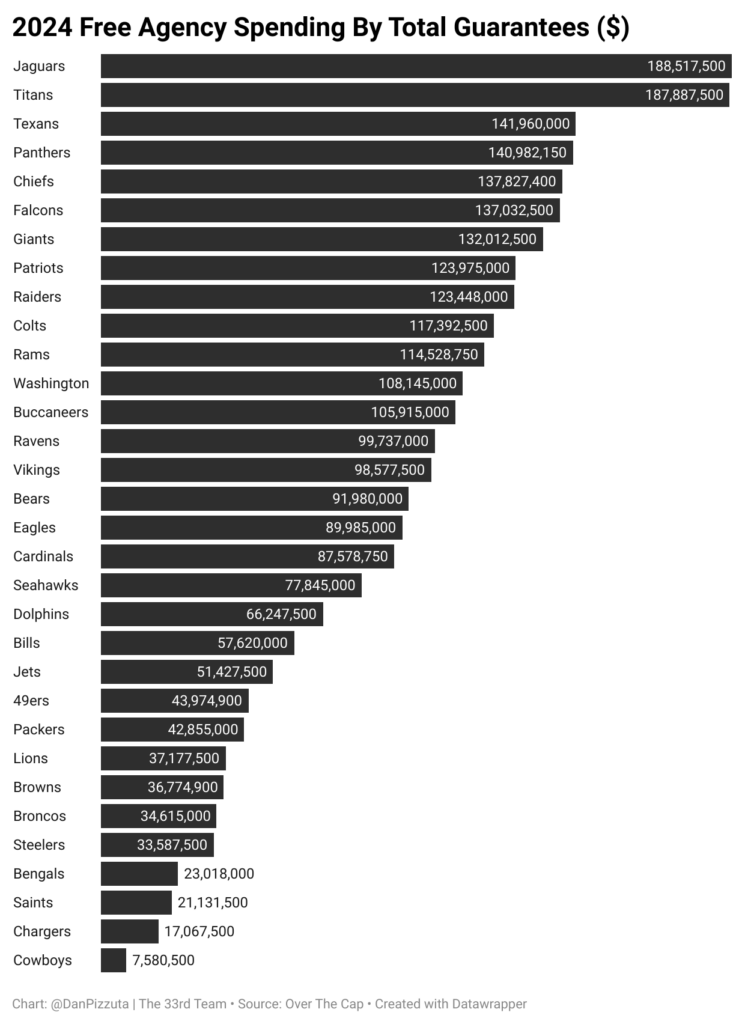
Going on a spending spree in free agency isn't typically a good long-term roster-building strategy, and the Cowboys haven't done that often in previous years. But Dallas also lost several free agents who were contributors to last season's 12-5 team, which was fourth in DVOA during the regular season.
Tony Pollard, Tyron Smith, Tyler Biadasz, Dorance Armstrong, Jonathan Hankins, Stephon Gilmore and Jayron Kearse either signed elsewhere or remain free agents. Most of those players haven't been replaced. The Cowboys are primarily relying on players to step up into more prominent roles. They'll also need this year's draft class to step in immediately to contribute.
The Cowboys' focus on 2024 has also frozen them from preparing for the future, leaving them in purgatory for the coming season, one that could be the last for coach Mike McCarthy.
Dallas has three big contract decisions looming.
Sometime in the next 12 months, Dak Prescott will be the highest-paid quarterback in the league. Sometime in the next 12 months, CeeDee Lamb will be one of the highest-paid wide receivers in the league. Sometime in the next 24 months, Micah Parsons will be the highest-paid defensive player in the league.
Dallas executive Stephen Jones noted this in a recent interview on Dallas radio.
"When we're all said and done, we max out our salary cap every year. We will have done that, and what comes with having a good roster, which we do, we also are looking toward signing our own guys. It doesn't mean it happens overnight. But when you're wanting to sign players like Dak and Micah and CeeDee, then certainly you have to hold money back if you want to have a realistic chance of signing those guys."
Stephen Jones - Dallas Local Radio
It would be easy to write off the lack of free agent spending as preparation for signing their star players. Still, Dallas hasn't been active — or given any indication it wants to be active — about getting ahead of these contracts.
That has hurt the Cowboys for the present and the future.
What the Cowboys Can Learn From the Eagles, Colts
Signing players, especially stars, early can help teams save money now and in the future. Prescott is slated to have a $55.1 million cap hit for 2024. Lamb is scheduled for an $18 million cap hit for his fifth-year option. Early extensions would allow the Cowboys to lower those figures and have an extra year to pay out the new money on the contracts.
As the cap continues to increase, it's much better to pay a top-of-the-market price now than to pay that rate in a year or two. It's even better if a team can find ways to spread out the cost of the contracts.
Let's look at what the Philadelphia Eagles did with the contract extension for DeVonta Smith, a player selected two picks before Parsons in the 2021 draft. The Eagles signed Smith to a three-year, $75 million extension this offseason.
On its face, that contract comes out to $25 million per year (tied for fourth among wide receivers), and the $75 million in cash in the first three years is tied for second behind Cooper Kupp. These are relatively large numbers for the new money on the contract.
In reality, Smith's contract still includes the 2024 season and his fifth-year option in 2025 on top of the extension. Basically, Philadelphia has an extra two years to stretch that $75 million, along with the money he was already owed.
Because of this, along with void years, the Eagles used to stretch out the signing bonus, Smith will never count for more than his reported average of $25 million.
And he doesn't hit the cap for more than $20 million until 2028. Philadelphia uses years before and after the actual extension to spread out the time allowed to pay for the deal. Here's what the breakdown looks like from Over the Cap:
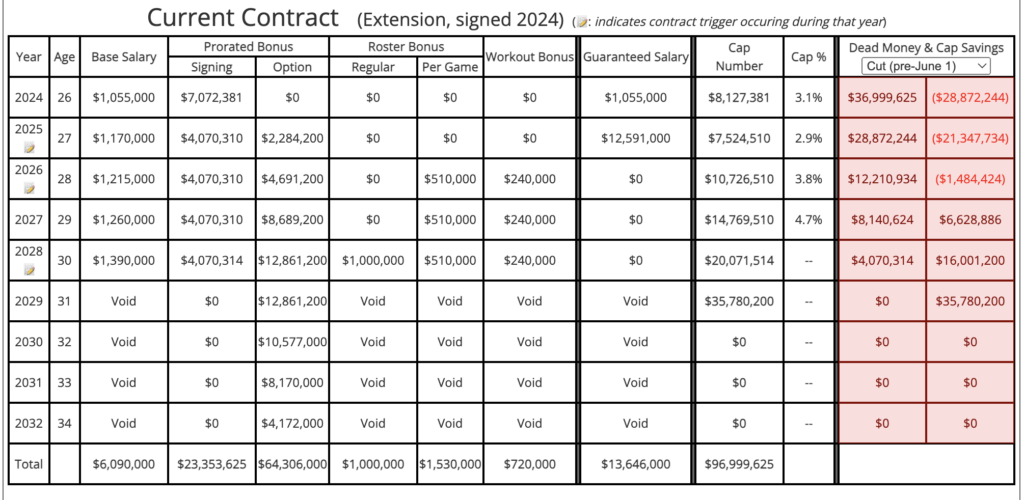
As a deal approaches expiration, there are fewer ways to extend the payment and accounting on the cap. Take Michael Pittman Jr., who the Indianapolis Colts placed the franchise tag on but eventually agreed to a three-year, $70 million contract.
Those three years are the only ones on the deal, and Pittman will hit the cap for $18 million, $23 million and $29 million through 2026.
This is where the Cowboys could sit with Lamb, who will make more than Smith and Pittman. By waiting, Dallas is giving itself a smaller window to pay out the contract — when the wide receiver market is about to blow up at the top.
WR, QB Markets Continue to Balloon
We last saw receiver contracts balloon during the 2022 offseason when Davante Adams and Tyreek Hill reset the top of the market after they were traded. Neither receiver came to an agreement with their original team, so they were traded and got their desired top-of-the-market contracts.
Even with those deals, there's some cap-and-reporting manipulation in play.
Adams signed for a then-record $28 million per year. However, his contract was boosted by unguaranteed salaries of $35 million and $36 million in the final two years of the deal, which will likely be redone before they come up.
Hill topped that with a $30 million per year average that has a $43.9 million salary in 2026. These were third contracts for older receivers — contracts that used those later years when these receivers will be in their 30s to boost the reported value.
That won't be the case for the coming extensions for star receivers looking for their second contract and first significant extension.
Lamb, Justin Jefferson and Ja'Marr Chase are still in their mid-20s and will eclipse that $30 million figure without juicing those numbers with bloated salaries on the back end. Once that first domino falls, it'll set the floor for the other deals. The first one to the market will likely be the cheapest.
Then, there is Prescott.
The Cowboys quarterback is in the final year of his contract, which has a no-trade and no-tag clause. If Dallas allows Prescott to play through the 2024 season without a new contract, the Cowboys could be in a similar situation as the Minnesota Vikings were this offseason.
Like Kirk Cousins, if Prescott's contract expires at the end of the league year, Dallas will have a $40.1 million dead money cap hit whether he re-signs or not.
The biggest difference is that Prescott will be 31 years old in July, leaving plenty of prime years for his next contract, which will likely be the most expensive deal in the league.
Dallas played a similar waiting game with Prescott in the 2020 and 2021 offseasons. The Cowboys put the franchise tag on the quarterback, who cost $31.9 million in 2020 before his four-year deal was agreed on the following offseason.
Getting Prescott signed earlier would have lowered that 2020 number and the quarterback would have had less leverage in contract talks. Instead, Prescott received the highest first-year cash total ($75 million) and most fully guaranteed money ($95 million) in a quarterback contract at the time.
He's about to have all that leverage again if negotiations reach a similar point.
What Do Dallas' Actions Tell Us?
Parsons is the furthest away from needing a new contract, but he'll top the $34 million per year contract handed to Nick Bosa last offseason.
Outside of the financial details, the biggest question is: What are the Cowboys' expectations for the 2024 season? Who do they think they are?
This is a team that was already one of the best regular-season teams over the past few seasons. Dallas is tied for fourth in wins since 2020, the year Prescott played on the tag.
The Cowboys are going into an all-in season in wait-and-see mode, yet it's unclear what exactly they're waiting to see. Last year, Prescott was second-team All-Pro and was second in the MVP voting. Lamb has been an All-Pro receiver for the past two seasons, with a first-team nod in 2023. Parsons has been an All-Pro in all three seasons of his NFL career.
What more do the Cowboys need to see?
Dallas' actions feel closer to a team ready to hit the reset button at any point. Sure, Parsons still has two more potential years on his deal. They could hit Lamb with the franchise tag. It's not impending danger all over.
But what's the plan? How is this roster getting better?
The Cowboys missed the opportunity to lock up their stars and use the immediate savings to help build up the team around them. The impasse has set up 2024 as a make-or-break year in Dallas — without really committing to the 2024 roster in a way most other teams in this situation would.
According to Over the Cap, the Cowboys have just under $4 million in effective cap space, which accounts for money needed to sign the rookie class. Jerry and Stephen Jones want you to believe that means the team is spending to the limit. Technically? Sure. But there were opportunities to do more.
That's not going all-in.
With how Dallas has approached this offseason, the Cowboys are closer to folding with a good hand than to pushing their chips into the middle of the table.


